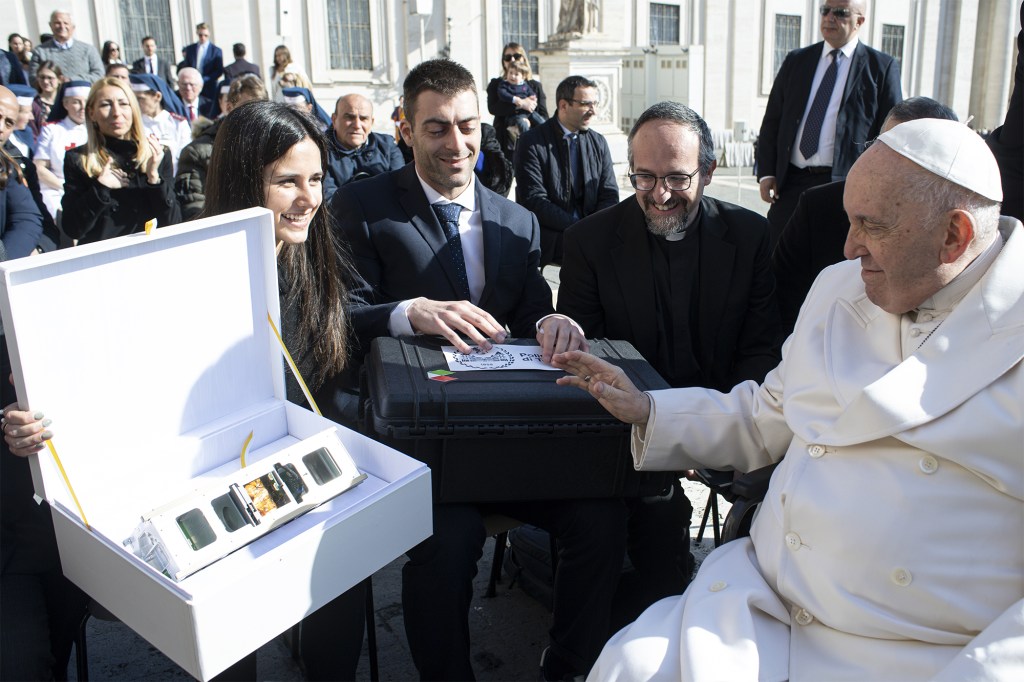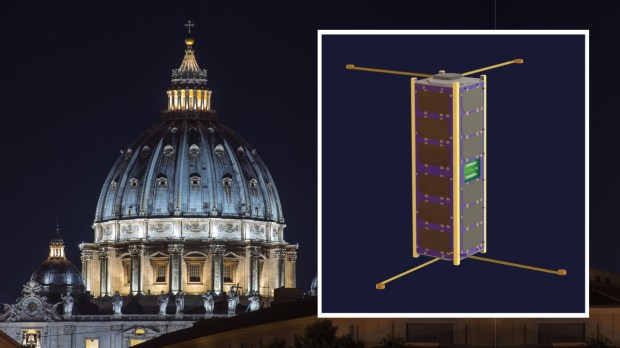The Spei Satelles mission has successfully launched from the U.S. base in Vandenberg, California. About the size of an American football, the Spei Satelles (Latin for “Guardian of Hope”) carries a recording of Pope Francis’ Statio Orbisfrom March 27, 2020, the extraordinary “urbi et orbi” blessing he gave before an empty St. Peter’s Square at the height of the Covid-19 pandemic.
According to Vatican News, the SpeiSat 3U CubeSat was launched “aboard a SpaceX Falcon 9 rocket, which will place it in Low Earth Orbit (LEO) at an altitude of 525 km, carrying a nano version of Pope Francis’ book Why are you afraid? Have you no faith? – a collection of images and selected fragments from the 2020 Statio Orbis.”
The Nanobook, which is about the size of the tip of a pen, was made in the Polytechnic University of Turin, and can only be read by nanotechnology-reading devices. But anyone who owns a regular UHF-band radio “can pick up a broadcast beamed from the satellite on 437.5 MHz to hear excerpts from the Pope’s book as it passes overhead,” Vatican News explains.
Although small in size, the satellite and the Nanobook carry great significance. The name and logo of the Space Mission itself reflect the desire to inspire hope, creating a symbol in the sky to promote fraternity and sharing on Earth — the driving forces behind all possible hope.

The satellite also has its own website, from which anyone can follow the mission’s progress. One can also have one’s name inscribed in a dedicated memory chip aboard the satellite: It is a virtual boarding pass.
“In order to obtain a virtual boarding pass, those interested will be asked to pledge to do a work of mercy on behalf of peace and hope,” the website reads. “Each person involved can thus become a concrete seed of hope in their daily lives.”
The satellite will stay in orbit for up to 12 years – but the radio transmitter only broadcasts for 6 months to a year, due to battery-induced limitations.
The project involved the Italian Space Agency, the National Research Council, The Polytechnic of Turin, the Instituto para el Diálogo Global y la Cultura del Encuentro (IDGCE), the Salesian University Institute of Venice (USVE), and the Digital Apostolate of the Archdiocese of Turin.



